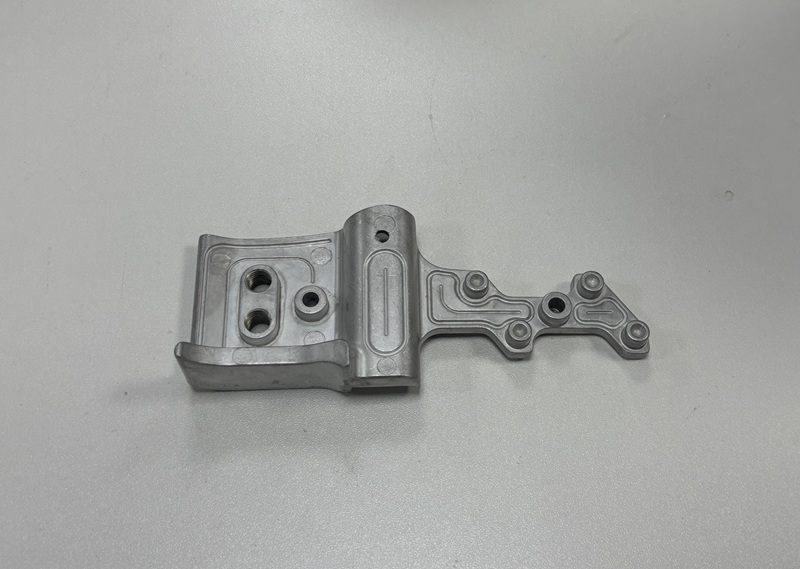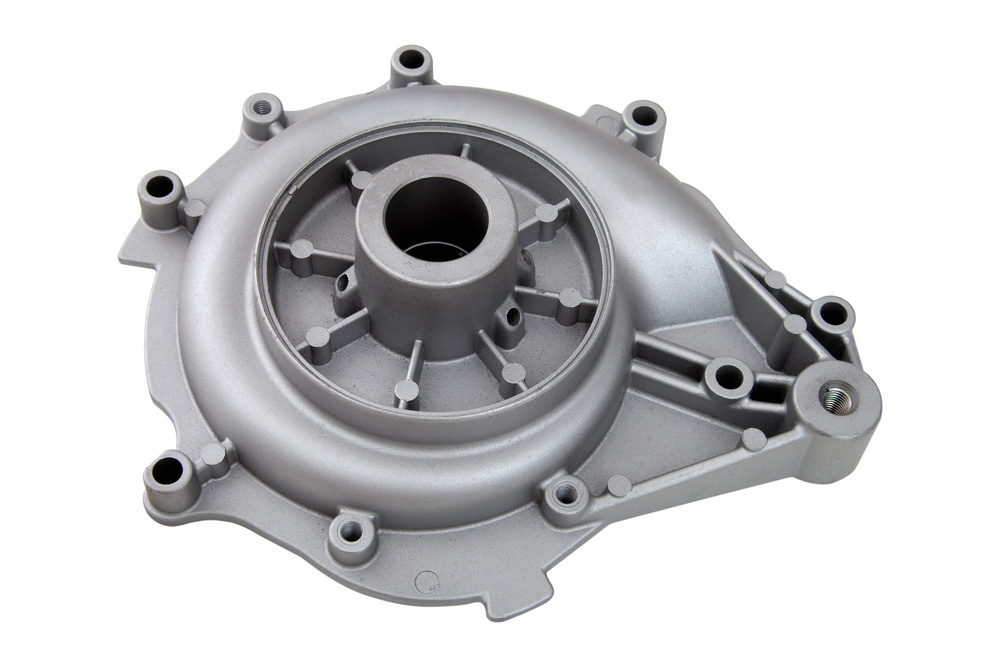In the manufacturing industry, casting processes are fundamental in creating complex metal components with precision and efficiency. Among the various casting techniques, investment casting and die casting are two prominent methods widely used across different sectors, including agriculture and marine industries. Understanding the differences between these two processes is crucial for engineers, designers, and manufacturers in selecting the most suitable method for their specific applications. This article delves into a comprehensive comparison between die casting and investment casting, exploring their processes, materials, applications, advantages, and limitations.
Overview of Die Casting
Die casting is a metal casting process that involves forcing molten metal under high pressure into mold cavities, which are machined into dies. This method is ideal for producing high volumes of small to medium-sized parts with good detail, fine surface quality, and dimensional consistency.
Process Description
The die casting process encompasses several key steps:
Mold Preparation: The dies are coated with a lubricant to facilitate the removal of cast parts and to control the temperature of the molds.
Clamping: The two halves of the die are securely closed and clamped together.
Injection: Molten metal is injected into the die cavity under high pressure, ensuring the metal fills the cavity completely.
Cooling: The molten metal solidifies quickly within the die due to the metal dies' rapid heat dissipation.
Ejection: Once the metal has solidified, the die halves are separated, and the casting is ejected using ejector pins.
Trimming: Excess material, such as flash and runners, is removed from the casting.
Materials Used
Die casting primarily uses non-ferrous metals with relatively low melting points. Common materials include:
Aluminum: Offers lightweight, corrosion resistance, and good mechanical properties.
Zinc: Provides high ductility, impact strength, and is useful for small, intricate parts.
Magnesium: Known for being the lightest structural metal, providing excellent machinability.
Copper: Used for its thermal and electrical conductivity.
Applications
Die casting is widely used in industries that require mass production of metal parts with consistent quality. Applications include:
Automotive Industry: Engine components, transmission cases, and structural parts.
Consumer Electronics: Housings for devices, connectors, and heat sinks.
Agricultural Equipment: Components requiring durability and precision.
Marine Hardware: Non-corrosive parts for boats and ships.
Overview of Investment Casting
Investment casting, also known as lost-wax casting, is a precision casting process for creating intricate metal parts with excellent surface finish and dimensional accuracy. It involves creating a wax pattern covered in a ceramic coating to form a mold, which is then heated to remove the wax and filled with molten metal.
Process Description
The investment casting process includes the following steps:
Pattern Creation: Wax patterns are produced, replicating the desired part in exact detail.
Assembly: The wax patterns are assembled onto a wax tree, forming a cluster for simultaneous casting.
Shell Building: The wax assembly is dipped into a ceramic slurry to build a ceramic shell around it.
Dewaxing: The ceramic shell is heated to melt and remove the wax, leaving a hollow cavity.
Casting: Molten metal is poured into the preheated ceramic mold.
Cooling: The metal solidifies within the mold.
Shell Removal: The ceramic shell is broken away, revealing the metal casting.
Finishing: The individual castings are cut from the tree and undergo finishing processes.


Materials Used
Investment casting is compatible with a wide range of metals, including:
Stainless Steel: Ideal for components requiring strength and corrosion resistance.
Carbon Steel: Used for its versatility and mechanical properties.
Aluminum Alloys: Offer a balance of light weight and strength.
Superalloys: Nickel and cobalt-based alloys for high-temperature applications.
Water Glass Casting: A variant using water glass as a binder for the ceramic shell, suitable for larger castings.
Applications
Investment casting is favored for its ability to produce components with complex geometries and high precision. Applications include:
Aerospace Components: Turbine blades, engine parts, and structural components.
Medical Devices: Surgical instruments and orthopedic implants.
Industrial Machinery: Valves, pumps, and fittings.
Marine Industry: Propellers and corrosion-resistant hardware.
Agricultural Machinery: Durable parts like gears and levers.
Comparative Analysis
Dimensional Accuracy and Surface Finish
Investment casting typically provides superior dimensional accuracy and smoother surface finishes compared to die casting. This is due to the precision of the wax patterns and the fine-grained ceramic mold materials used. Die casting, while offering good accuracy, often yields surfaces that may require additional finishing processes.
Production Volume and Cost
Die casting is more cost-effective for high-volume production runs due to its rapid cycle times and reusable metal dies. The high initial tooling cost is offset by the low per-unit cost in mass production. Investment casting is better suited for low to medium production volumes of complex parts, where the cost of producing precise, intricate components is justified.
Material Versatility
Investment casting offers greater material versatility, accommodating a wide range of ferrous and non-ferrous alloys, including high-temperature and high-strength materials. Die casting is limited to non-ferrous metals with lower melting points due to the thermal limitations of the die materials.
Part Complexity
Investment casting excels in producing parts with complex geometries, thin walls, and intricate details, eliminating or reducing the need for machining. Die casting can produce complex shapes but is generally not as adept at handling extremely intricate designs due to limitations in mold fabrication and the potential for defects.
Advantages of Die Casting
Die casting offers several benefits, particularly for large-scale production:
High Production Rates: Fast cycle times enable high-volume manufacturing.
Excellent Dimensional Consistency: Provides uniformity across batches.
Reduced Post-Processing: Parts often require minimal machining or finishing.
Material Efficiency: Minimal waste due to precise injection and reusable scrap.
Advantages of Investment Casting
Investment casting is advantageous for producing intricate components with high precision:
Design Flexibility: Ability to cast complex shapes and fine details.
Superior Surface Finish: Smooth surfaces reduce the need for extensive machining.
Wide Material Selection: Accommodates a variety of alloys, including difficult-to-machine materials.
Reduced Assembly: Combining multiple components into a single casting reduces assembly time.
Limitations and Considerations
Die Casting Limitations
While die casting is efficient, it has certain limitations:
High Tooling Costs: The initial investment in dies is significant.
Limited Materials: Not suitable for high-melting-point metals.
Porosity Issues: Can result in internal defects affecting strength.
Size Restrictions: Best suited for small to medium-sized parts.
Investment Casting Limitations
Investment casting also has its challenges:
Higher Per-Unit Cost: More labor-intensive, affecting cost-effectiveness for large volumes.
Longer Lead Times: The process is more time-consuming, especially in shell building.
Size Limitations: Large parts can be challenging due to mold handling and stability.
Ceramic Shell Fragility: Shells can be delicate, leading to potential defects if not handled properly.
Applications in Agriculture and Marine Industries
Both die casting and investment casting play significant roles in agriculture and marine applications.
Agriculture Applications
Agricultural machinery requires components that are durable, precise, and capable of withstanding harsh conditions. Investment casting is often used for producing stainless steel casting parts like gears, levers, and brackets due to their complex shapes and the need for corrosion resistance. Die casting may be employed for high-volume parts such as housings and fittings that require dimensional accuracy and lower costs.
Marine Applications
In the marine industry, components are exposed to corrosive saltwater environments. Investment casting is advantageous for producing complex, corrosion-resistant parts, such as propellers and valves, using materials like stainless steel and specialized alloys. Die casting is used for components where complex shapes are less critical but high volume and consistent quality are required.
Choosing the Right Casting Method
Selecting between die casting and investment casting depends on various factors. Manufacturers must consider the following:
Complexity of Design: Investment casting is preferred for intricate designs.
Production Volume: Die casting is more cost-effective for large volumes.
Material Requirements: Investment casting accommodates a wider range of materials.
Surface Finish and Precision: Investment casting provides superior finish and accuracy.
Cost Constraints: Die casting offers lower per-unit costs at high volumes.
For assistance in determining the most suitable method, consulting an experienced manufacturer is recommended. Companies like investment casting manufacturer can provide valuable insights and support tailored to specific project needs.
Die casting and investment casting are both essential processes in the manufacturing industry, each offering unique advantages. Die casting is ideal for high-volume production of less complex parts with excellent dimensional consistency and low per-unit cost. Investment casting is superior for producing complex components with high precision and a variety of materials, though it comes at a higher cost and longer production time.
Understanding the differences between these methods allows manufacturers to make informed decisions, optimizing product quality and production efficiency. By leveraging the strengths of each process, industries can meet the diverse demands of applications ranging from agriculture to marine engineering.
FAQs
1. What are the main differences between die casting and investment casting?
Die casting uses high-pressure to inject molten metal into metal dies, suitable for high-volume production with good dimensional accuracy. Investment casting involves creating a ceramic mold around a wax pattern, allowing for complex shapes and finer details but is more time-consuming and costly per unit.
2. Which casting method is better for producing complex geometries?
Investment casting is better suited for complex geometries due to its ability to replicate intricate details from the wax patterns, offering greater design flexibility.
3. Can die casting produce parts with thin walls?
Yes, die casting can produce parts with relatively thin walls, but there are limitations compared to investment casting, which can achieve thinner sections due to the nature of the ceramic molds.
4. Is investment casting more expensive than die casting?
Investment casting typically has higher per-unit costs due to its labor-intensive process and material usage. However, it may be cost-effective for low to medium production volumes of complex parts.
5. What materials are suitable for die casting?
Die casting is suitable for non-ferrous metals with low melting points, such as aluminum, zinc, magnesium, and copper alloys.
6. How does water glass casting relate to investment casting?
Water glass casting is a form of investment casting that uses water glass (sodium silicate) as a binder for the ceramic mold, offering cost savings and is suitable for larger castings where ultra-fine detail is less critical.
7. When should a manufacturer choose investment casting over die casting?
A manufacturer should choose investment casting when producing complex parts requiring high precision, using materials unsuitable for die casting, or when production volumes are low to medium, making die casting's high tooling costs impractical.
English
العربية
Français
Русский
Español
Português
Deutsch
italiano
日本語
한국어
Nederlands
Tiếng Việt
ไทย
Polski
Türkçe
አማርኛ
ພາສາລາວ
ភាសាខ្មែរ
Bahasa Melayu
ဗမာစာ
தமிழ்
Filipino
Bahasa Indonesia
magyar
Română
Čeština
Монгол
қазақ
Српски
हिन्दी
فارسی
Kiswahili
Slovenčina
Slovenščina
Norsk
Svenska
українська
Ελληνικά
Suomi
עברית
Dansk
Afrikaans
Gaeilge
Eesti keel
latviešu
Беларуская мова
Български
Català
Lietuvių
Lëtzebuergesch
Македонски













